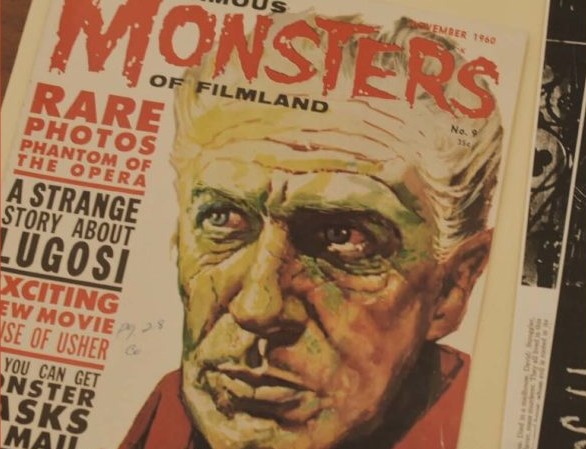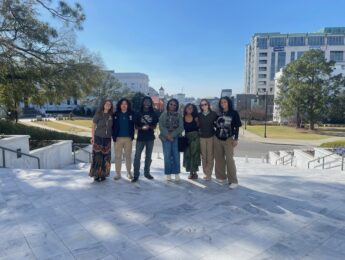
On May 1 the students of HIST 3910 Museums & Society, taught by Professor Amy Woodson-Boulton, displayed their popup exhibit called Where Fear and Wonder Meet: 400 Years of Animals and Monsters in Hannon’s Special Collections. From 17th-century books of monstrous births, to Aesop’s Fables and Puss in Boots, to production materials from Planet of the Apes, this exhibit recognized the roles of animals and monsters in the everyday lives, identities, and cultures of people over the last four centuries in Europe, the United States, and Japan. The artifacts displayed reflected their societies’ curiosity about — and fear of — the unknown, through depictions of real and imagined creatures and monsters.
The exhibit drew from the wide breadth of objects held by Archives and Special Collections at LMU. Archives and Special Collections has helped preserve and make accessible over twenty-thousand spectacular and rare historical objects and materials to LMU’s students. Throughout the curation process the students worked closely with Lauren Zuchowski the Special Collections and University Archivist. The students pulled from this extensive collection of fascinating objects each of which touched on issues of the unknown. Together, the student curators whittled this collection down to a set of about 15 objects, each of which was expressly located in the spectrum between fear and wonder.
The discipline of history is one which places a premium upon archival research, and the students of HIST 3910 relished the opportunity to do serious archival research in one of the best university archives. During this project the students took full advantage off the newly opened Public History & Digital Humanities Lab, located within the History Department. Students met in the Lab often, and the audio guide was recorded using the Lab’s microphones and recording software.
The collection was oriented on two colliding axes: one of fear, the other of wonder. The display tables were adorned with colorful table clothes, each noting fear, wonder, or a combination thereof. The blues at the beginning of axis one noted wonder, and as the colors progressed to purple a mixture of fear and wonder became apparent, and by the end the tables were covered with vibrant red cloths.
The decision to incorporate the display into colliding axes was inspired by the Jewish Museum Berlin, which the students visited while on their BCLA Global Immersion Course trip to Berlin. The Jewish Museum unites its architecture and display catalogue to form one design which tells the history of Berlin’s Jewish population. This museum was especially well received by the students of the trip. Many felt the unique blend of art, artifact, and architecture to be deeply effective and evocative. By combining the display with the objects, the student curators created a space which invited the viewer to interrogate an object’s location within the exhibit. Visitors were encouraged to ask, “Why was this object placed here and not two spots over?”
Central to the exhibit was the notion of otherness. The objects demonstrated “othering” of certain groups, it the explored the boundaries between human, animal, and monster. The exhibit drew visitors’ attention to the manner in which humans use depictions of animals to define what is acceptable or desirable and what is outcast. The exhibit pointed to the history of racism stereotyping which are pernicious examples of “othering.” While curating this exhibit the well attuned history students noticed these familiar tensions present within many of these objects. While these objects were often not explicit, themes of race and power shown through clearly. Thus, the students curated the exhibit to bring these nuanced ideas forward. Written on small paw-prints, scattered throughout the exhibit, were labels which drew specific attention to issues of race, gender, and power. These cards did not shy away from difficult questions and indeed, visitors were deeply engaged with both the objects on display and the difficult conversations which surround them.
The pop-up exhibit was a resounding success. Reference Librarian Alexander Justice commented that the work displayed was “graduate level.” The exhibit was well thought out, carefully curated, and deeply thought provoking. HIST 3910 is among the several courses offered by the History Department within the Public and Applied History concentration. This course teaches students to engage the public in important historical conversations. The exhibit was the culmination of site visits, and class discussions all of which centered on how best to bring nuanced history to the public. Where Fear and Wonder Meet presented a fascinating interpretation of the history of animal depictions, while adding important context to the discussion of representation in art. It heightened awareness to troubling undertones of “otherness” found within the classic cannon of monster stories. And it highlighted the compelling work done by history students every day on this campus.
By: Thomas Duncan, Loyola Marymount University, Department of History, Class of 2019.






